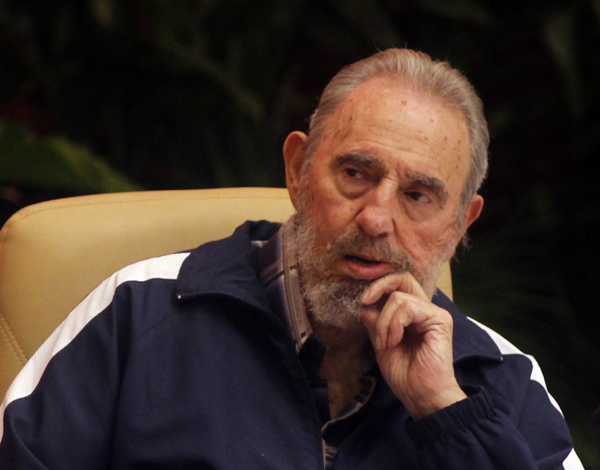The Stone in the Road in Seeing Cuba

HAVANA TIMES, April 21 — They say that the first victim of a war is the truth, and that could be one of the keys to understanding the dispute between Cuba and the United States. On both sides of the Florida Strait, information is so politicized that it barely allows one to see reality.
The problem on the island is less serious, since the media there already have little credibility. I would dare to say that the majority of citizens know they’re never told the whole truth, particularly if it affects the government’s interests.
However on the other bank, tremendous credulity exists when consuming news about Cuba, though this is not anything new.
Recently the 50th year since the Bay of Pigs invasion was marked, whose failure was due, among other things, to disinformation. The invaders believed the Cuban people would rebel, breaking up the revolutionary forces and justifying the entry of the US Marines. One of the heads even assured the insurgents that all they would have to do was make it to the highway and hitchhike in to Havana.
As we all know, at that time Fidel Castro and his revolution enjoyed enormous popularity, to the point that it’s incomprehensible that the CIA and the White House didn’t know this. One has to wonder whether they were victims of their own propaganda.
Their error cost the lives of 100 invaders and the imprisonment of another 1,000, who later suffered the humiliation of being exchanged for canned goods from the US. The invasion consolidated Castro’s leadership and pushed Cuba toward the Soviets. “The Perfect Failure” was the title of a report by my colleague Michael Voss.
Truth on the streets
When I was preparing to travel to the island back in 1990, I left with the presumption that I would be covering extremely critical times for the Cuban Revolution. I even considered the possibility of experiencing a violent internal conflict.
However my impression changed barely after having hit the streets. I spoke with people and listened to their complaints, but I didn’t find any symptoms of an inability to govern. Something didn’t balance between the information we were managing overseas and the reality I witnessed on the island.

My bosses reminded me that there were dozens of people taking refuge in various embassies there. But they were surprised when I told them that a 100 yards from the Spanish office — occupied by 20 refugees — tens of thousands of Cubans were dancing in the streets in the carnival celebrations.
Seeking to put reality in context, I decided to accompany my reports with background information, features on Santeria, censorship, youth, women, “inventing” and people’s daily lives amid the economic crisis.
A distraction from Miami
But the task wasn’t easy. The media of the Miami exile community distracted us, making us run across Havana chasing false “popular risings” and “coup d’états” as tanks supposedly advanced down the Malecon seawall drive as citizens were presumably immolating themselves in the middle of the street.
Years later, a Cuban-American journalist who writes for the largest media outlet of the exile community admitted, “In Miami, the work of reporting to the population is limited to an exercise of apparent compassion: one only says what they want to hear, see and read.”
As the 2Oth century concluded, the hopes in both Florida and Washington were lost that the Cuban Revolution would collapse along with the USSR. They then bet all their cards on the “biological solution” and began a new wave of rumors.

The Commandante seemed to enjoy it when, after disappearing from the public eye, they would publish news of his death and soon after he would resurge like the phoenix. He once said, making fun of them, that the day he really dies no one will believe it.
In the Miami press appeared “irrefutable proof” that he suffered from Parkinson’s. So Castro invited a group of correspondents to dinner, where he spoke to us standing for a half an hour while holding — by the bottom and with only two fingers — an overflowing “mojito.” And he didn’t spill a drop.
A half century after the invasion, little has changed. They continue “killing” Fidel; they exaggerate the social dissatisfaction, the influence of dissidents, the number of emigrants, the value of remittances, the financial crisis and the shortages of foods.
They underestimate the popular support that the government has, and they predict protests like those in Egypt. Finally, hundreds of thousands of Cubans took to the streets on April 16, 2011, but paradoxically it was to celebrate the defeat of the exiles at the Bay of Pigs.
Tripping on the same old stone
It’s known that the human being is the sole animal that trips two times over the same stone, but it seems exaggerated to spend half a century at the same point in the road, kicking the same rock. Nothing good comes from it, you advance little and your shoes get worn out.
I prefer to wear out my shoes exploring the national traits noted by Fernando Ortiz, traveling through history in search of the roots of the present and trying to embrace something of this rich and complex multiracial culture.
But above everything else, I will continue wearing them out walking the streets of Cuba, observing the surroundings, listening to the common people to understand their dreams, hopes and frustrations. That is and will continue to be my principal “source” of information.
—–
An authorized translation by Havana Times (from the Spanish original) published by BBC Mundo.





